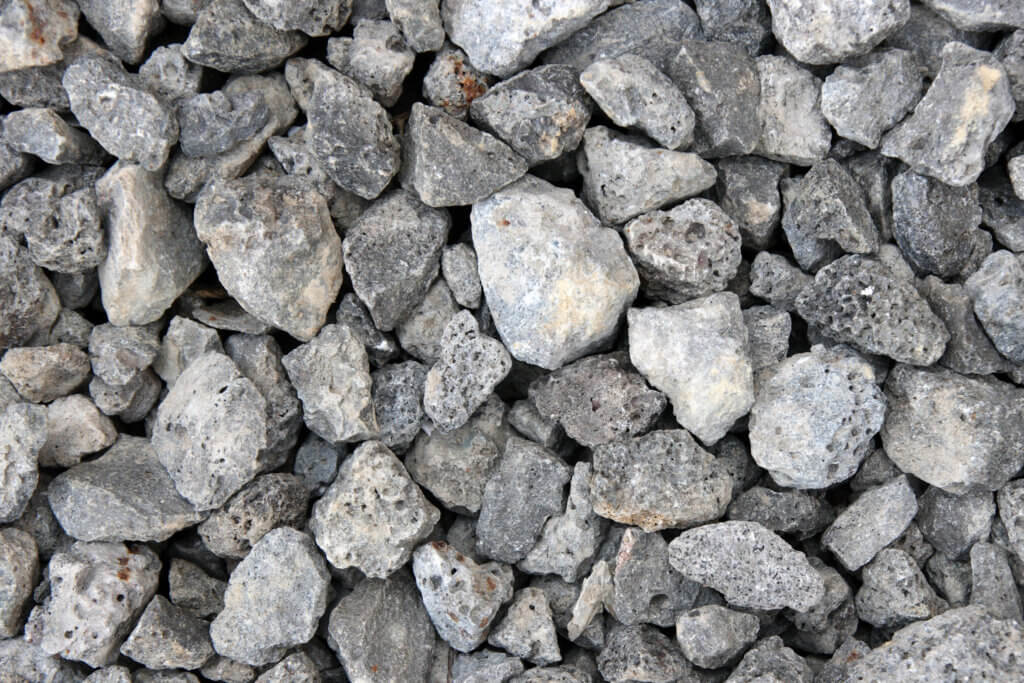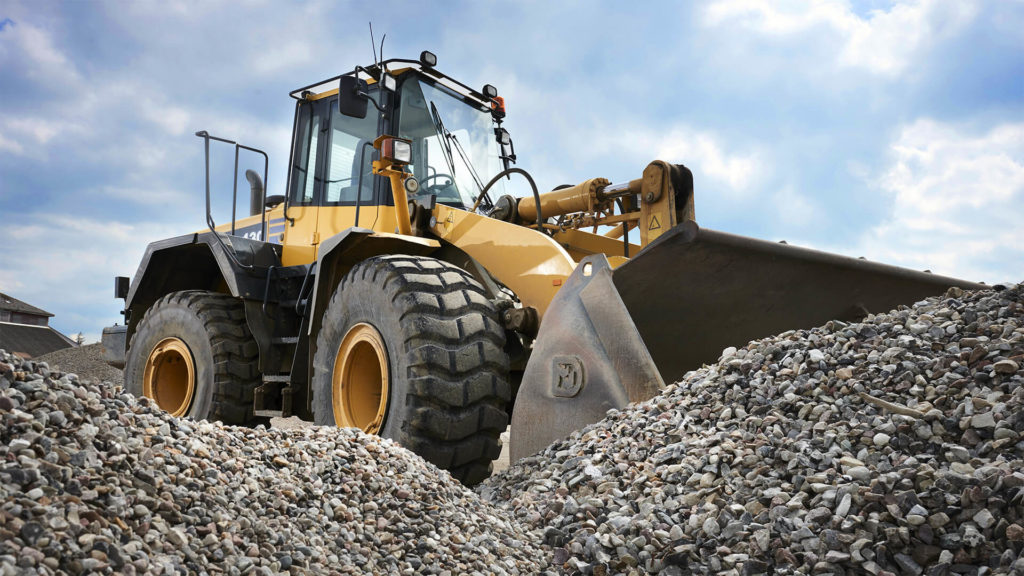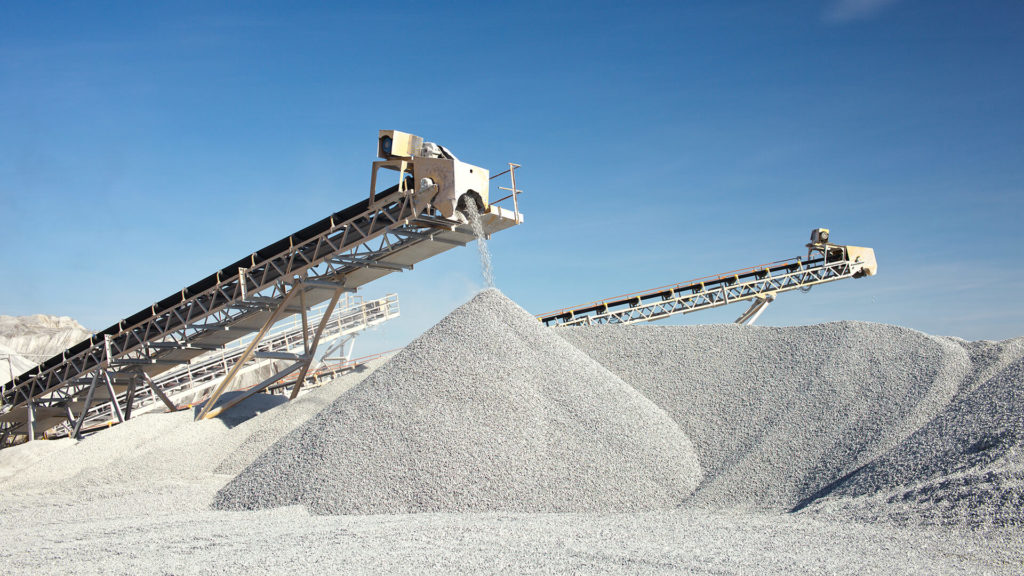When you’re planning your next construction, landscaping, or driveway project, one of the most common materials you might need is gravel. Gravel plays a critical role in building strong foundations, adding aesthetic appeal to landscapes, and ensuring durability in high-traffic areas. In this comprehensive guide, we’ll walk you through the different types of gravel and how to choose the right one for your project.
What is Gravel?
Gravel is a collection of various sized and coloured rock fragments, commonly sourced from quarries where larger rocks are crushed into smaller pieces. According to ISO 14688-1:2017, gravel is a type of coarse soil with grain sizes between 2mm and 63mm, or approximately 0.8in and 2.5in. While gravel can naturally occur in riverbeds and other environments, most gravel used today comes from controlled quarrying processes due to environmental regulations. Gravel is widely used in construction and landscaping projects for its affordability, availability, and versatility.
| Designation | Grain Size (mm) | Grain Size (approx. in) |
| Fine Gravel | 2.0 – 6.3 | 0.08 to 0.25 |
| Medium Gravel | 6.3 – 20 | 0.25 to 0.80 |
| Coarse Gravel | 20 – 63 | 0.80 to 2.50 |
How is Gravel Classified?
Gravel is typically classified by size, texture, and intended use. A common term like ‘3-inch minus’ refers to a mixture where the largest stones are no bigger than three inches in diameter, and it includes all smaller particles down to dust. This range of sizes helps improve compaction. Gravel can also be classified based on its function: certain types are designed for better drainage, while others provide a stable base for roads or pathways.
Detailed Look at Various Gravel Types
Coarse Pit Run (3″ Minus)
Coarse pit run gravel is a natural aggregate, consisting of rocks, soil, and clay. This unprocessed material is ideal for larger-scale construction projects where a stable base is required. The 3″ Minus refers to the size of the largest stones, making it perfect for use as a base in road and driveway construction.
Characteristics: The large size of coarse pit run gravel offers excellent drainage and creates a strong, compact base for any structure built on top of it.
Uses: Foundations for roads and driveways, general construction fill, and base material for larger landscaping projects.
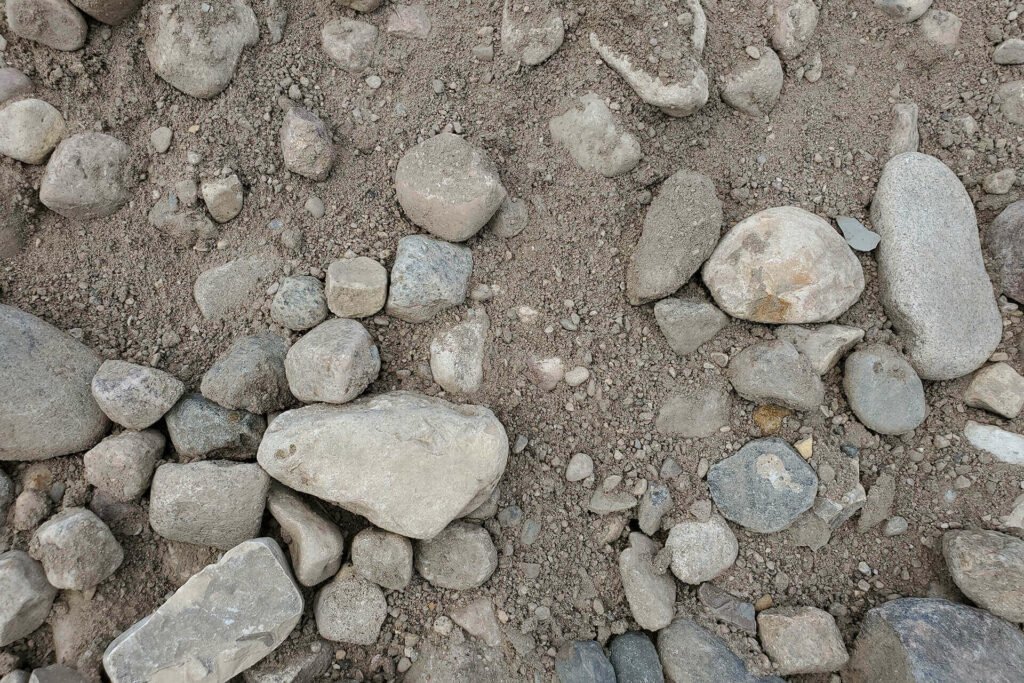
Crusher Dust
Crusher dust, a finely crushed rock, is used primarily for paving and as a base under concrete slabs and driveways. While it consists mostly of fine particles that fall outside the typical gravel classification, it may also contain some larger fragments up to 5 mm in size. This mix of fine and slightly larger particles allows it to form a tight bond with other materials, creating a smooth, stable surface. It also helps to fill in gaps and voids, reducing the risk of shifting or settling.
Characteristics: Crusher dust is a cost-effective material that provides excellent drainage. While it can help suppress weeds by forming a compact base, it may not prevent weed growth entirely. For additional weed control, consider using weed fabric or applying herbicide treatment.
Uses: Base for driveways and walkways, paver installations, and under concrete slabs.
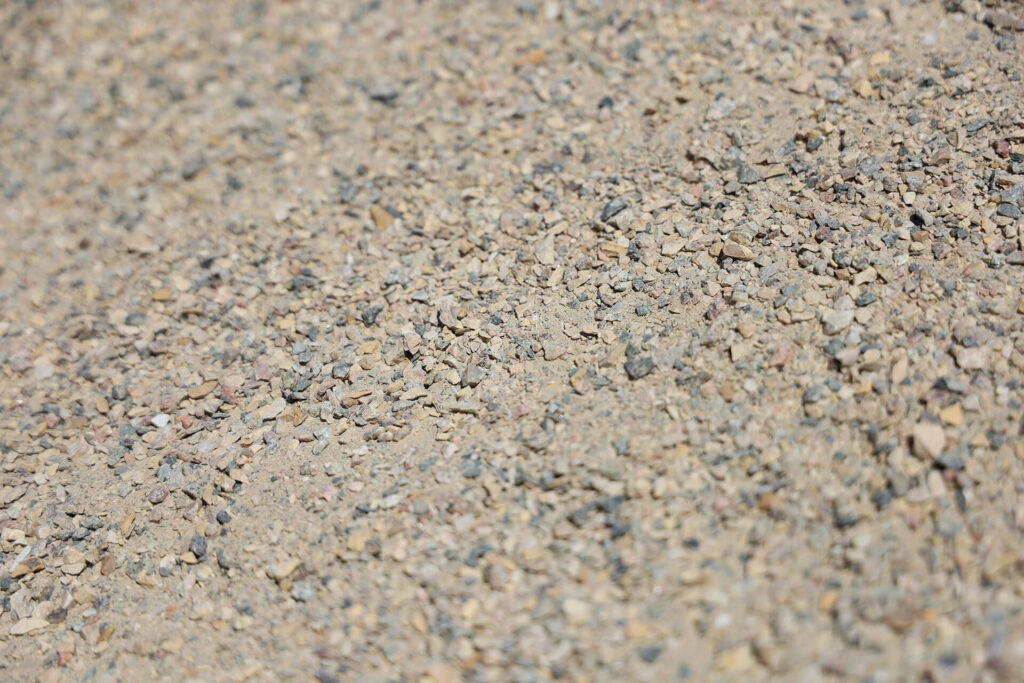
Pea Gravel
Pea gravel consists of small, smooth, round stones about the size of a pea. It’s often used for decorative purposes in landscaping and as a functional material for walkways. Its smooth texture makes it easy to walk on, and its aesthetic appeal adds a touch of elegance to garden paths and other outdoor areas.
Characteristics: Pea gravel’s smooth, rounded stones provide a comfortable surface for walking and are available in various colours, enhancing the visual appeal of your project.
Uses: Walkways and garden paths, decorative landscaping, play areas, and dog runs.
Check out our guide on how to build a Pea Gravel patio for a detailed step-by-step process.
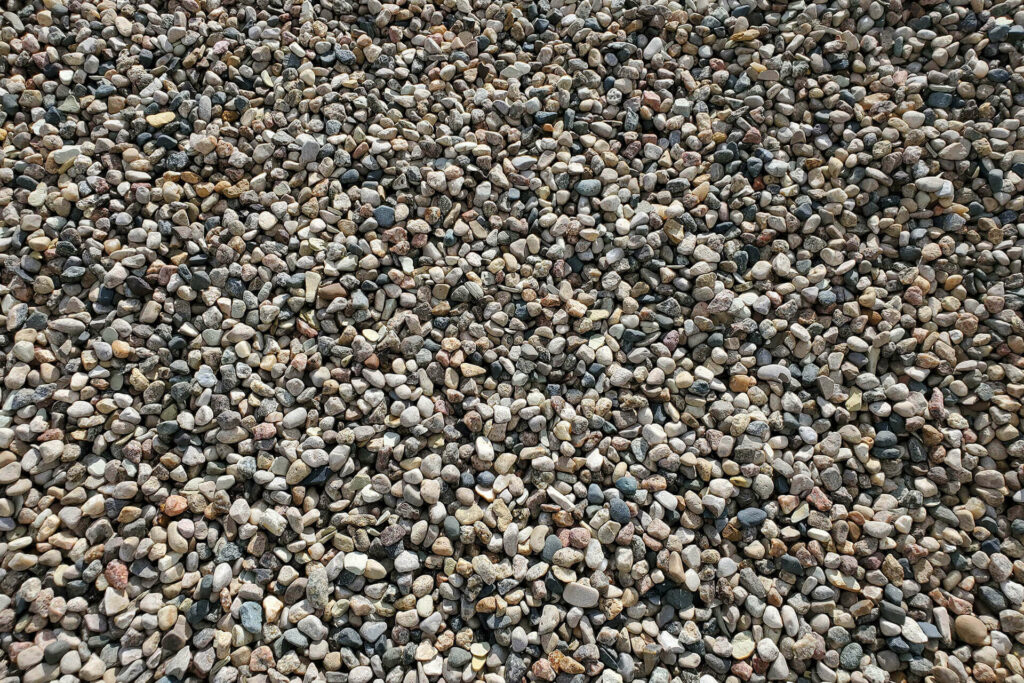
Type 8 Sub Base
Type 8 sub base gravel is primarily used as the foundational layer in road and driveway construction. Its blend of larger stones with smaller particles ensures excellent drainage, making it an ideal choice for projects requiring moisture management and stability at the bottom-most layer.
Characteristics: Its larger aggregate provides excellent drainage and a stable foundation. Well-suited as the initial layer in multi-layer constructions to prevent water accumulation and foundation shifting.
Uses: Sub-base for roads and driveways, parking lot construction, and foundation for paving where drainage is key.
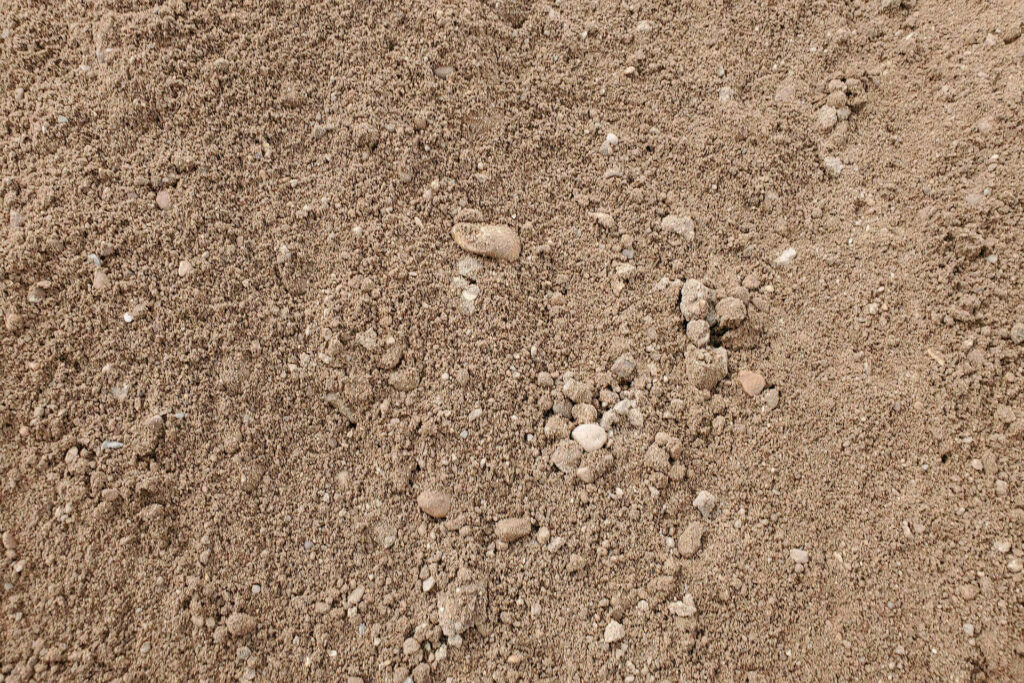
Type 32-33 Road Base
Type 32-33 road base gravel is designed to create a compact, load-bearing layer under asphalt or other surface materials. With a mixture of crushed rock and finer particles, this material provides superior compaction and strength, making it essential for supporting the heavy loads in roads, driveways, and other high-traffic areas.
Characteristics: Its fine particles allow for excellent compaction and stability. This material’s load-bearing capacity is ideal for supporting the weight and stress of vehicles.
Uses: Driveway and road base, foundation for large structures where compaction is critical, and heavy-traffic areas like parking lots.
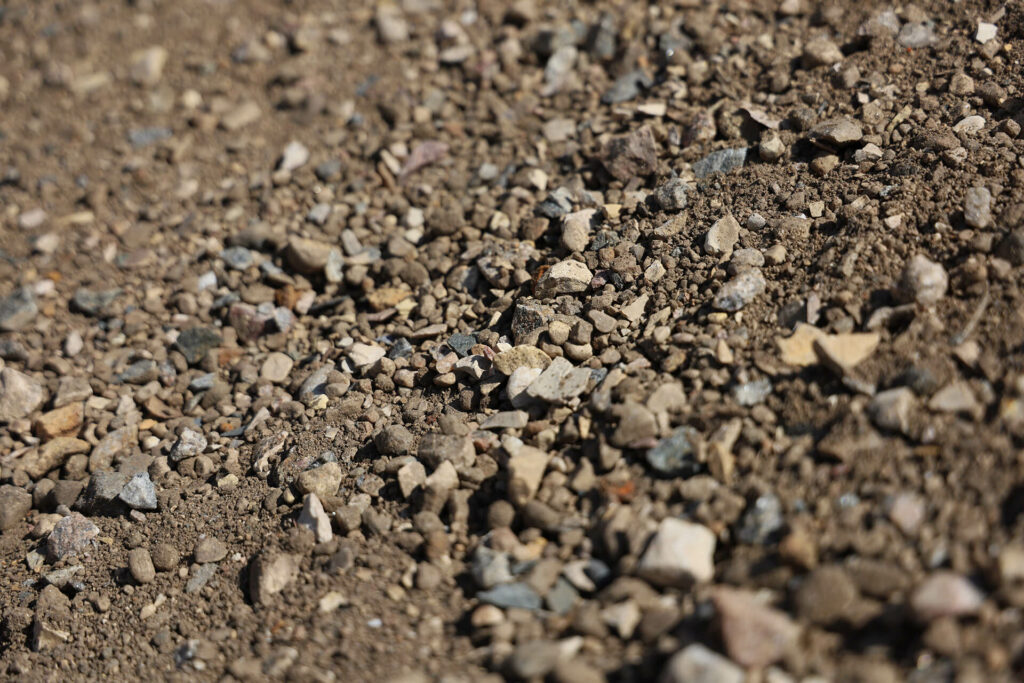
Traffic Gravel
Traffic gravel provides a tough, durable surface in high-traffic areas that require stability and wear resistance. This gravel is a mix of crushed stone and dust, providing both durability and improved traction, making it ideal for areas where a sturdy and stable surface is essential.
Characteristics: Traffic gravel’s durability makes it ideal for areas where heavy vehicles frequently pass, ensuring the surface remains intact and functional for extended periods.
Uses: Road surfaces in high-traffic areas, parking lots, driveways and access roads
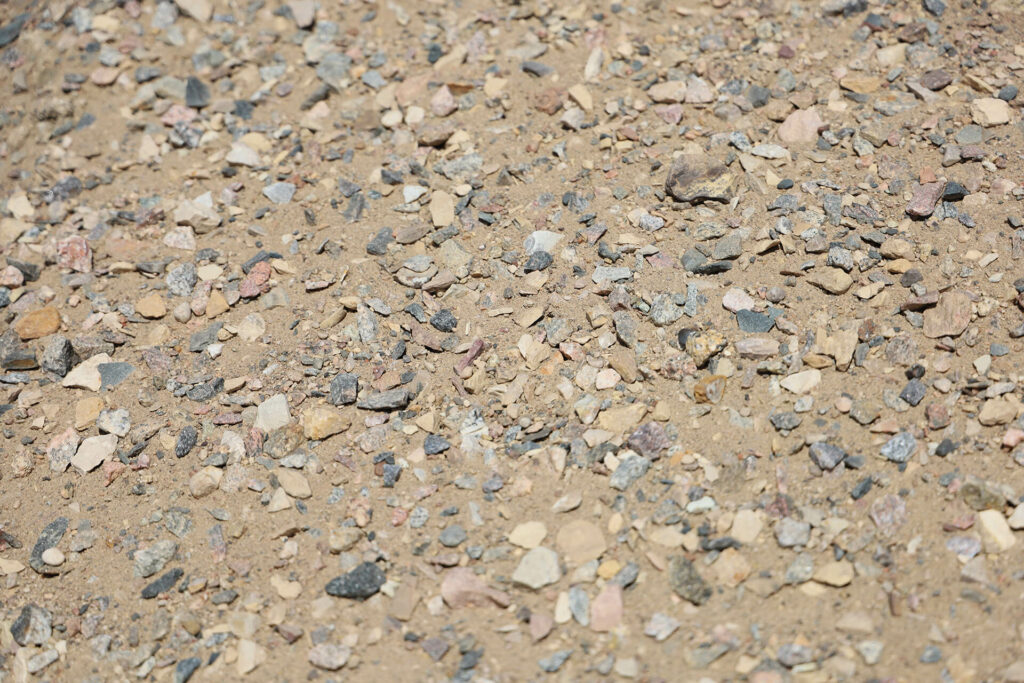
Crushed Rock
Crushed rock is a versatile material created by mechanically breaking down larger rocks into smaller, angular fragments. Its angular shape makes it excellent for compaction, which is why it’s commonly used in construction projects requiring a stable base. Crushed rock is widely used for roads, driveways, and other applications where strong support is necessary.
Characteristics: Crushed rock’s angular particles interlock well, offering superior stability and compaction. It’s durable and available in various sizes, making it ideal for both load-bearing and drainage purposes.
Uses: Base for roads and driveways, drainage, concrete and asphalt mixing, and general construction.
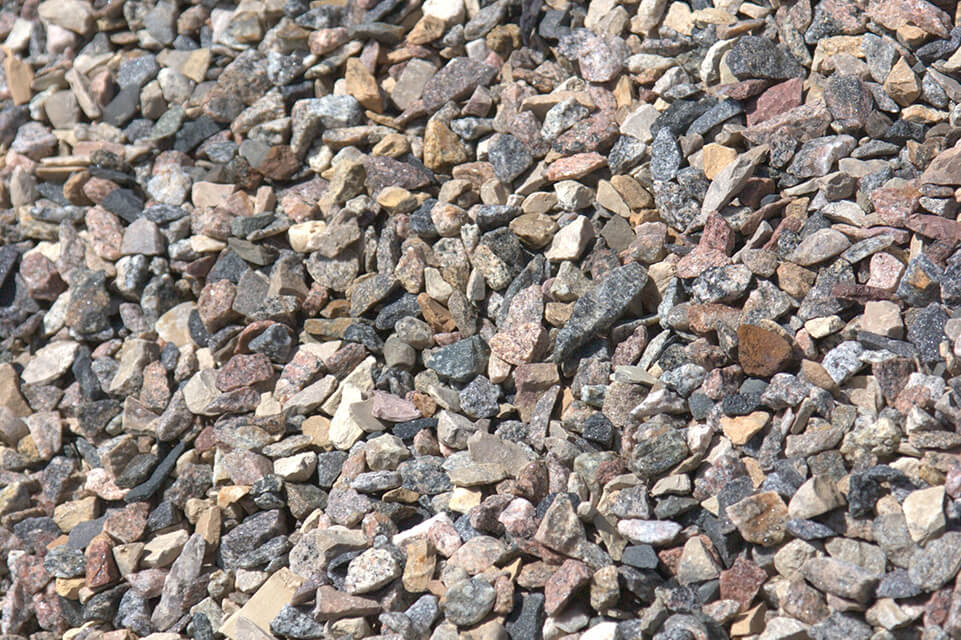
Round Rock
Round rock consists of naturally rounded stones that have been smoothed by erosion or weathering. It’s commonly used for decorative landscaping and drainage applications, as its smooth texture makes it visually appealing and functional for water management.
Characteristics: Unlike crushed rock, round rock lacks sharp edges, which makes it unsuitable for compaction or anything load-bearing. However, it’s excellent for aesthetics and drainage, as water can flow easily around the rounded stones.
Uses: Landscaping, drainage, and decorative accents in garden beds or pathways.
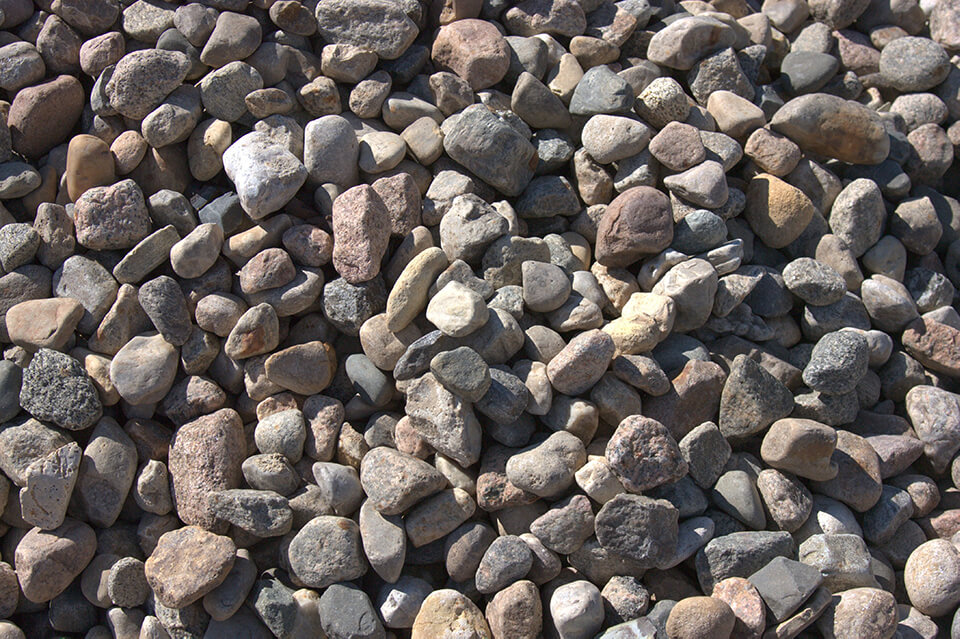
Washed Round Rock
Washed round rock is similar to standard round rock but has been subjected to water and agitation to improve its cleanliness and appearance. This material is popular for decorative landscaping and areas where water drainage is essential.
Characteristics: The washing process removes fine particles, leaving clean, smooth stones. This makes it a great choice for water features, drainage solutions, and areas where aesthetics are important.
Uses: Decorative landscaping, drainage applications, and areas requiring clean, aesthetically pleasing rock.
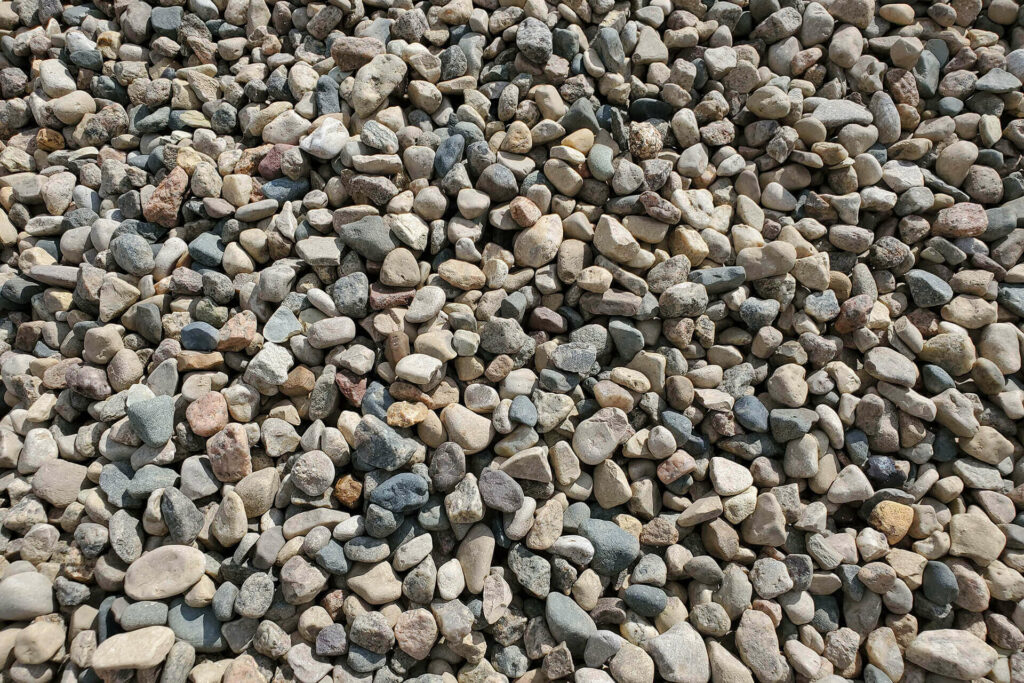
How to Choose the Right Gravel for Your Project
When choosing gravel for your project, several factors come into play, including the size of the gravel, the type of project, and the environment in which it will be used.
Driveways
For driveways, durability is key. Crusher dust and traffic gravel are great choices, providing a stable, compact surface that resists wear and tear. Crushed rock is another excellent option for driveways due to its angular shape, which offers strong compaction and good drainage, ideal for withstanding the weight of vehicles.
Check out our detailed guide on gravel driveway installation and maintenance.
Walkways
Pea Gravel is ideal for garden paths and walkways, providing a smooth, comfortable surface that’s easy to walk on and visually appealing. For a more decorative option, washed round rock offers a polished, natural look, though its rounded shape doesn’t compact as well, making it best for lighter foot traffic areas.
Landscaping
Pea gravel is perfect for decorative landscaping, while crusher dust, crushed rock are excellent for projects needing durability and drainage. Round rock or washed round rock work well for decorative features like water gardens or dry riverbeds, offering a smooth, natural look while aiding in drainage.
Construction
For construction projects, coarse pit run, type 8 sub base, type 32-33 road base and crushed rock provide the necessary support for heavy loads and stable foundations, especially for roads and large-scale builds. Traffic gravel is crucial for high-traffic areas like parking lots or roads, offering excellent compaction and durability under stress from vehicles.
Conclusion
Choosing the right gravel is crucial for the functionality, durability, and appearance of your project. At Serbu, we offer high-quality gravel for every need, from stable foundations to decorative enhancements. Understanding your project’s specific requirements ensures your gravel choice will provide both structural integrity and lasting visual appeal.

